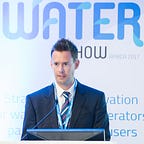Technologies for Water Conservation, Efficiency, and Quality Protection in Agriculture
Agriculture, with its vast water consumption and significant contribution to water pollution, is at the epicenter of global water challenges. However, it can also be a part of the solution. With advancements in technology, we now have a toolkit to enhance water conservation, improve efficiency, and protect water quality in the agricultural sector.
For water conservation, various technologies help minimize water use. Drip irrigation systems deliver water directly to the root zone of plants, reducing losses from evaporation and runoff. Micro-sprinkler systems similarly allow for precise water delivery, with lower water usage compared to traditional sprinkler systems.
Soil moisture sensors provide real-time data about the water needs of plants, preventing over-irrigation. They work by detecting the water content of the soil and can relay this information to farmers or directly to irrigation systems, thereby automating irrigation scheduling and saving water.
A suite of technologies can also enhance water efficiency — ensuring that each unit of water used in agriculture generates the maximum possible value. Precision agriculture technologies, like GPS and remote sensing, allow farmers to tailor their water and nutrient applications to the specific needs of different parts of their fields, optimizing input use and crop yields.
On a larger scale, satellite imagery and drones can provide detailed information about crop health and water needs, enabling precise and timely interventions. This not only improves water and nutrient use efficiency but also enhances pest and disease management, further boosting crop productivity.
Artificial intelligence (AI) and machine learning algorithms can also play a significant role in improving water efficiency. By integrating diverse data sets — from soil and weather conditions to crop characteristics and market prices — these algorithms can provide farmers with sophisticated decision support tools. These tools can help determine the most efficient irrigation schedules, select the best crop varieties for given conditions, or even predict market trends for strategic planning.
Protecting water quality is another critical aspect of sustainable agriculture, and technology can contribute significantly in this area. Biofiltration systems, which use microorganisms in soil or other media to remove pollutants from water, are a simple yet effective technology for treating agricultural runoff. These systems can significantly reduce the levels of nutrients, pesticides, and other contaminants entering water bodies from agricultural fields.
Constructed wetlands are another nature-based technology for water quality protection. They mimic natural wetlands and are engineered to treat agricultural or other wastewater, removing pollutants through a combination of physical, chemical, and biological processes.
Advanced treatment technologies, such as membrane filtration or advanced oxidation processes, can also be employed to remove contaminants from agricultural wastewater. While these technologies are generally more expensive, they can be suitable for certain applications, such as recycling wastewater for irrigation or other reuse.
Cover crops and conservation tillage are other strategies facilitated by technology to protect water quality. Cover crops, enabled by seed drills and other planting technologies, can reduce soil erosion and nutrient runoff. Conservation tillage equipment allows farmers to leave crop residues on the field, enhancing soil health and water retention, and reducing erosion and runoff.
The successful implementation of these technologies often requires supportive policies, research and development, farmer training, and community engagement. Governments, agricultural extension services, research institutions, technology companies, and farmers themselves all have crucial roles to play in adopting and advancing these technologies.
In conclusion, a multitude of technologies are available to conserve water, improve efficiency, and protect water quality in agriculture. These technologies can help transform agriculture from being a part of the water problem to being a part of the solution. With continued innovation and collaboration, we can harness the power of technology to ensure the sustainable use of our precious water resources, guaranteeing food security and environmental health for generations to come.
